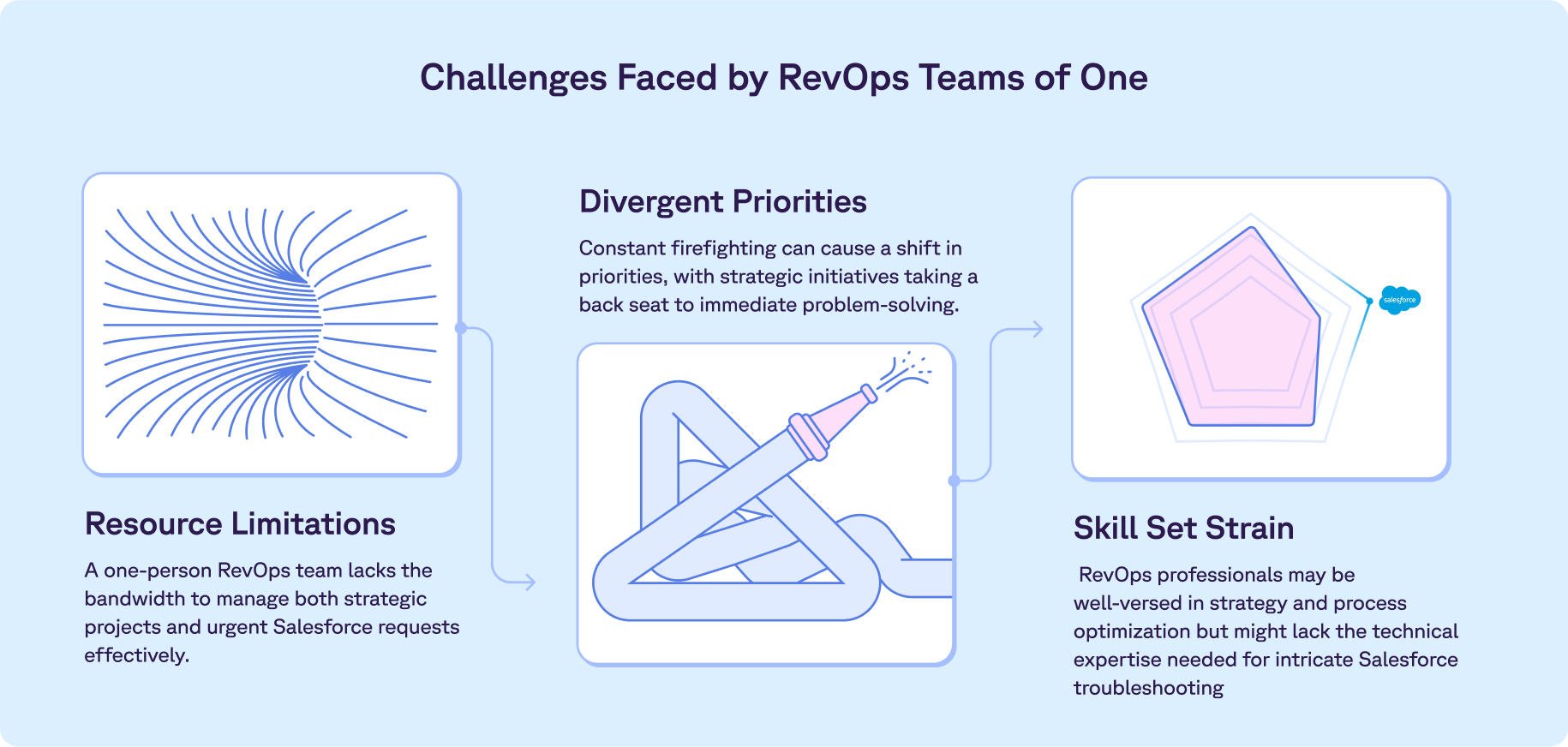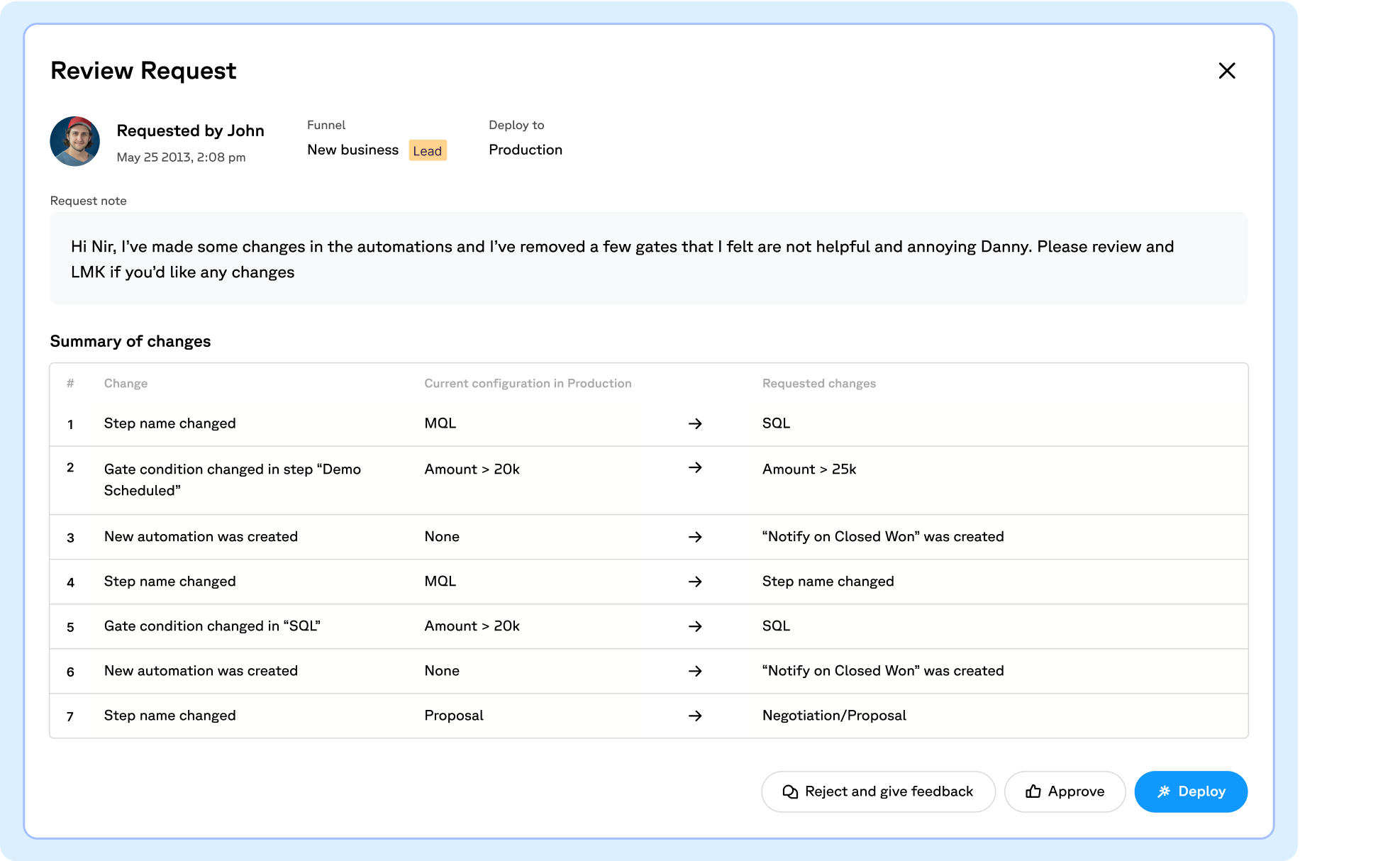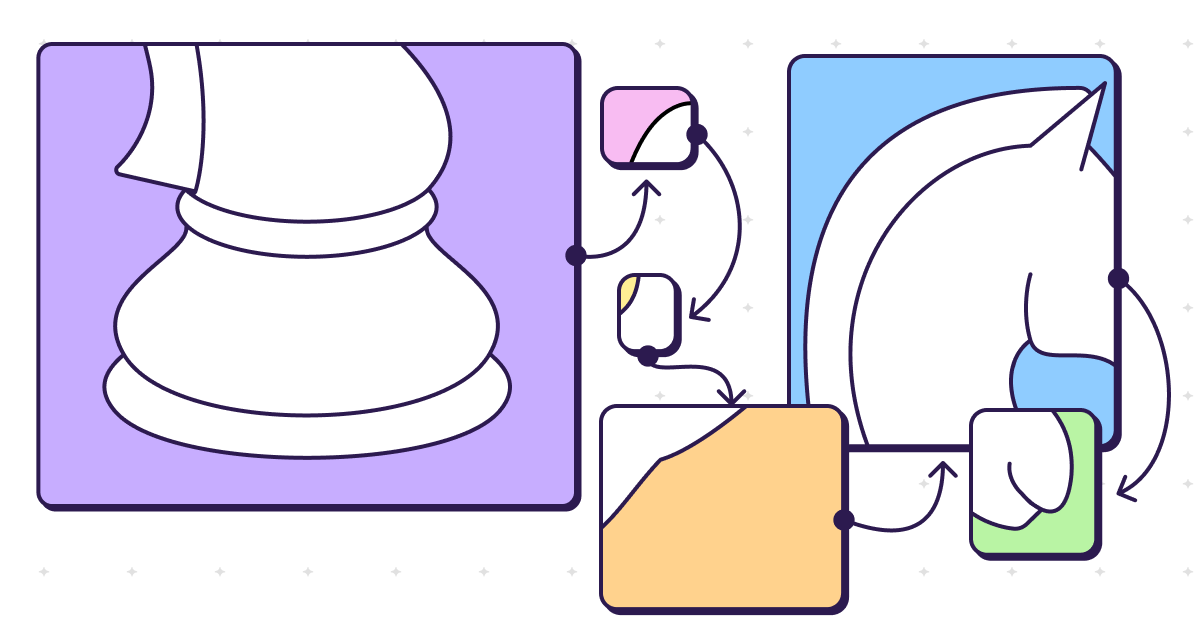
Revenue Operations (RevOps) has emerged as a critical function within modern organizations, unifying sales, marketing, and customer success teams to optimize revenue generation processes. However, when a RevOps team is understaffed and stretched thin, the original strategic vision of the role can become muddled by the constant demands of handling urgent Salesforce issues.
I drew insights from the experiences of RevOps “Teams of One,” like that of Daniel Cohen, Revenue Operations Manager at Proton.ai, who, in the RevOps Co-op blog “Thriving in RevOps as a Team of One,” uncovers pathways to thrive through collaboration and alignment between departments. It struck a chord with me because, at Sweep, we're frequently working with one-person RevOps teams, enabling them to perform like a team of 3-4 and unlock new ways to collaborate in Salesforce (more on this later).
In this blog, I delve into the challenges faced by "RevOps Teams of One," explore the divergence from proactive strategic work to reactive problem-solving, and offer strategies to strike a balance between firefighting and proactive growth initiatives.
The Promise of RevOps
RevOps, at its core, is designed to streamline revenue-generating activities by aligning sales, marketing, and customer success efforts. The team is tasked with identifying operational inefficiencies, implementing data-driven strategies, and nurturing new revenue streams. Ideally, this approach should foster collaboration and improve customer experiences while driving revenue growth.

The Reality: Salesforce Firefighting
However, in many cases, the daily responsibilities of a RevOps professional deviate from this strategic vision. A "Team of One" can find themselves bogged down in the endless cycle of addressing Salesforce issues. These issues range from creating new reports for sales to data discrepancies/duplications, preventing the team from focusing on value-driven initiatives that can transform the business. The reactive nature of firefighting leaves little room for proactive problem-solving and strategic projects, ultimately undermining the potential impact of the RevOps function.
This is also a function of Salesforce being technically out of reach for business users. The RevOps “Team of One” is typically the only person that understands what is happening on the Salesforce backend and how to build out complex automations. This makes it very challenging to align technical and business users on the Salesforce selling motion, to delegate tasks to non-technical users, and to collaborate within Salesforce.
Challenges Faced by RevOps Teams of One
- Resource Limitations: A one-person RevOps team lacks the bandwidth to manage both strategic projects and urgent Salesforce requests effectively.
- Divergent Priorities: Constant firefighting can cause a shift in priorities, with strategic initiatives taking a back seat to immediate problem-solving.
- Skill Set Strain: RevOps professionals may be well-versed in strategy and process optimization but might lack the technical expertise needed for intricate Salesforce troubleshooting.

Strategies for Balancing Priorities
- Delegate and Collaborate: Identify routine Salesforce issues that can be addressed by other teams, such as sales or marketing operations. This frees up time for strategic initiatives.
- Automation and Process Improvement: Implement automation tools and optimize processes to minimize repetitive tasks and reduce the likelihood of firefighting.
- Proactive Issue Prevention: Use data analysis to identify trends and potential issues before they become critical. This enables a proactive approach to problem-solving.
- Time Blocking: Dedicate specific time blocks for addressing urgent issues and reserve other time for strategic projects and planning.
- Implementing Sweep: Sweep addresses the challenges faced by RevOps Teams of One, empowering them to maintain their focus on strategic growth initiatives and revenue-driving projects while also ensuring the smooth functioning of Salesforce.
The RevOps "Team of One" is no doubt challenging, with the pressure of Salesforce firefighting often overshadowing the strategic goals of the position. However, by implementing strategies to delegate and automate, and implementing tools like Sweep to enhance efficiency can be game changers for RevOps professionals. With Sweep’s visual canvas, technical and non-technical users alike can validate configurations, easily implement automations, and implement more sales enablement in a fraction of the time it takes them working natively in Salesforce.
As the role of revenue operations continues to evolve, tools like Sweep play a pivotal role in reshaping the experience for RevOps professionals, enabling them to reclaim their proactive, strategic focus while simultaneously ensuring the operational excellence that Salesforce demands. A RevOps team that can effectively manage these dual responsibilities will be well-equipped to achieve its original promise: orchestrating revenue growth through strategic alignment and operational excellence.












